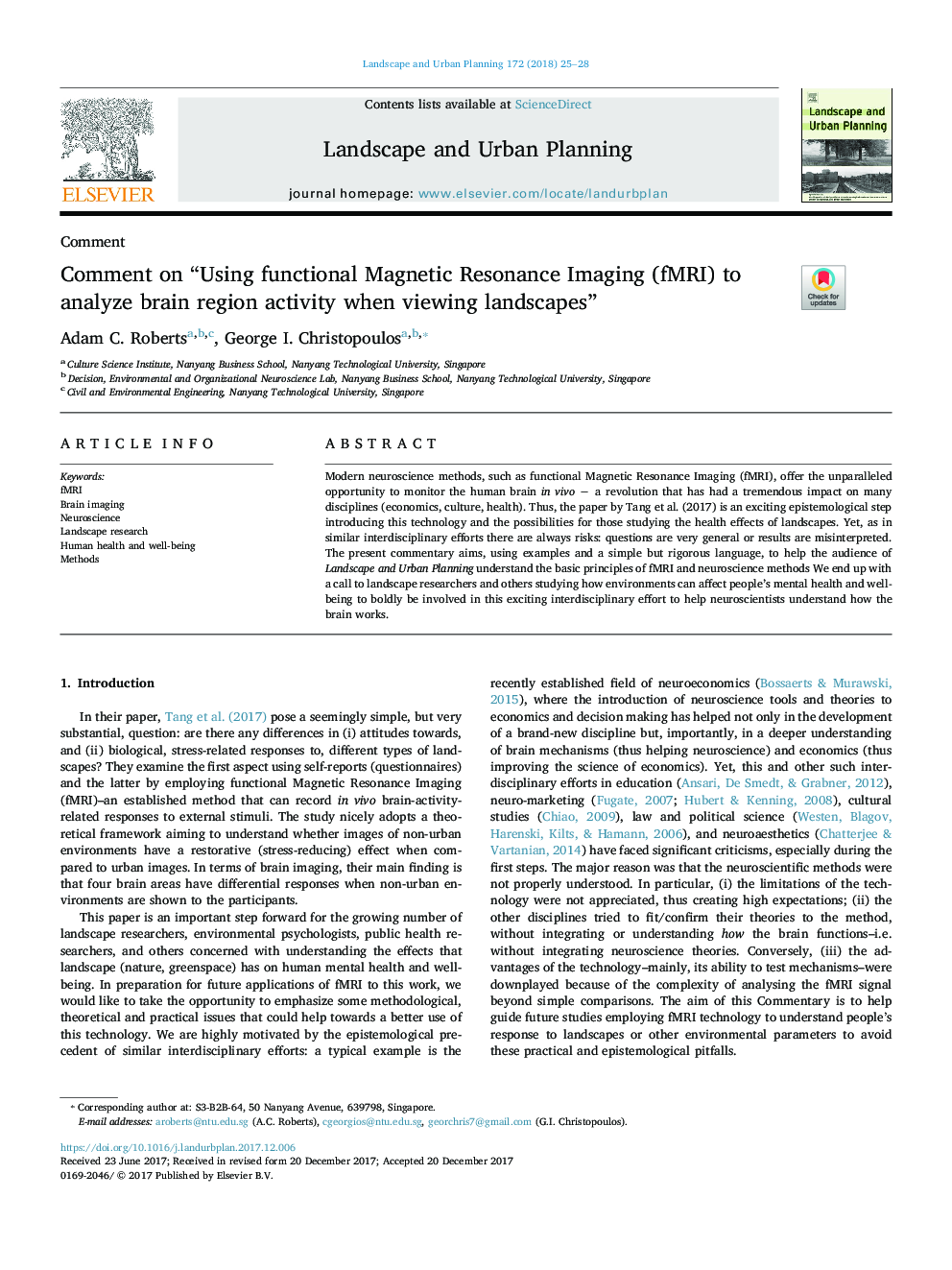| Article ID | Journal | Published Year | Pages | File Type |
|---|---|---|---|---|
| 7459863 | Landscape and Urban Planning | 2018 | 4 Pages |
Abstract
Modern neuroscience methods, such as functional Magnetic Resonance Imaging (fMRI), offer the unparalleled opportunity to monitor the human brain in vivo â a revolution that has had a tremendous impact on many disciplines (economics, culture, health). Thus, the paper by Tang et al. (2017) is an exciting epistemological step introducing this technology and the possibilities for those studying the health effects of landscapes. Yet, as in similar interdisciplinary efforts there are always risks: questions are very general or results are misinterpreted. The present commentary aims, using examples and a simple but rigorous language, to help the audience of Landscape and Urban Planning understand the basic principles of fMRI and neuroscience methods We end up with a call to landscape researchers and others studying how environments can affect people's mental health and well-being to boldly be involved in this exciting interdisciplinary effort to help neuroscientists understand how the brain works.
Related Topics
Life Sciences
Agricultural and Biological Sciences
Ecology, Evolution, Behavior and Systematics
Authors
Adam C. Roberts, George I. Christopoulos,
